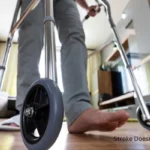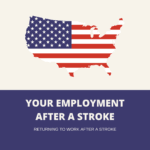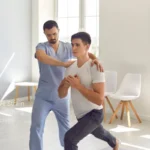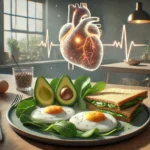What Causes Stroke In Young People?
Every year, more than 20,000 adults in their 20s and 30s across the U.S. face a serious brain-related event—and that number has jumped by 44% since 1995. Pretty alarming, right?
Here’s what happens: a stroke occurs when blood flow to the brain gets disrupted, cutting off oxygen and nutrients to brain cells. And the scary part? Within just a few minutes, those brain cells start to die off.
It was once thought to mainly affect those in their later decades, but unexpectedly, a growing number of younger adults are now encountering this condition.
Impact can be intense. Some people bounce back completely, while others face lasting challenges or, in tragic cases, don’t make it through. It’s a difficult reality for all who experience it.
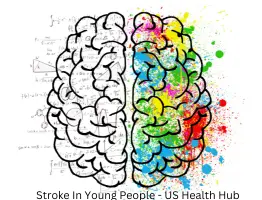
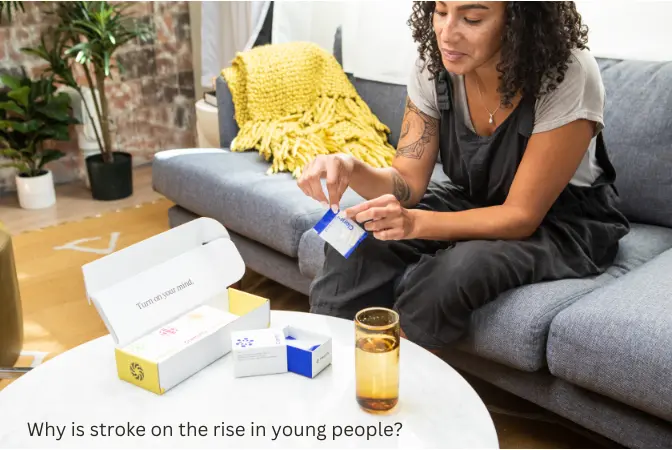
Why are more folks in their early years dealing with this now?
Lately, this concern has been appearing more frequently, fueled by several major influences. A growing number of individuals are falling into habits that increase risk—such as regular alcohol intake, long hours spent seated, or excess weight gain. These behaviors put significant strain on internal circulation, disrupting how fluids move through vital pathways. When that flow slows down, conditions arise where dangerous clots can form more easily, potentially resulting in severe complications that demand quick attention.
One rising factor among younger adults comes from a growing list of chronic issues such as diabetes and various heart-related complications. Long-running challenges place steady strain on internal systems, lowering resilience and making individuals more vulnerable to serious outcomes as years pass.
Beyond unhealthy habits and existing medical factors, there are multiple elements that can make it show up sooner than expected, such as:
Neck artery dissection : Neck artery dissection arises when an inner wall inside an artery in that area splits or rips. Once a split forms, clotting can start inside a vessel, cutting steady flow toward brain regions. A sharp drop in oxygen supply can spark serious issues if prompt action is missing.
Patent foramen ovale (PFO): A patent foramen ovale (PFO) refers to a small natural opening between upper chambers of a heart, something present in roughly one out of every four individuals. In most cases, it doesn’t cause any problems and goes completely unnoticed. However, in certain situations, a small clot can pass through that opening and travel toward a brain, cutting off circulation and causing severe issues.
When fluid within our system becomes dense and starts to clump beyond usual levels, it can form obstructions. Such buildup disrupts smooth movement through internal pathways, causing a slowdown or complete halt in normal circulation. As time passes, these disruptions may lead to damaging outcomes that can influence overall wellness if not addressed with proper care and attention.
| Factor | Contributing to Rise |
| Lifestyle: | |
| – Unhealthy diet (high sodium, saturated fat, low fiber) | Leads to higher chances of high pressure, insulin issues, and excess weight gain. |
| – Physical inactivity | Raises chances of heart-related issues. |
| – Smoking and vaping | Damages arteries and raises the chance of clot formation. |
| – Excessive alcohol consumption | Raises blood pressure and weakens blood vessels |
| Medical conditions: | |
| Hypertension | Primary cause behind problem |
| – High cholesterol | Contributes to plaque buildup in arteries |
| – Diabetes | May cause harm to vessel walls and spark inflammation across internal systems. |
| – Sleep apnea | Disrupts oxygen flow and increases pressure |
| Other factors: | |
| Mental struggles like stress and depression | May contribute to unhealthy behaviors and inflammation |
| Economic and social inequalities | Not everyone has equal access to medical professionals, nutritious meals, or secure living environments. |
What to Be Aware of in Your 20s and 30s
Strokes don’t discriminate by age, you know? But when it comes to young folks, the signs might throw you off a bit compared to older adults. Here’s what to look out for:
1. A sudden drop in strength or sensation in face, arm, or leg on one side. This shift may arrive without warning and can turn simple actions — holding objects, walking, or steady movement — into unexpectedly tough tasks.
2. Sudden mental fog and trouble expressing thoughts. You might find it tough to put ideas into words or choose what to say, while also feeling unsure about what others are trying to convey.
3. If your vision suddenly becomes unclear—things appear blurry, you notice double images, or your focus feels off—it could indicate something serious happening in your system and shouldn’t be ignored.
4. You could find yourself feeling wobbly or off-balance, as if stability has slipped away. Each step may seem uncertain, and trying to move in a straight path turns into a challenge. Your surroundings might appear to spin or shift, creating a sensation that everything is moving when it’s not. Motions that once felt natural can suddenly seem clumsy or unfamiliar, leaving you uneasy and unsure where to place your next step.
5. If you suddenly get an intense headache out of nowhere, without any obvious reason, take it seriously. Such a sudden, extreme pain can indicate something going on in the brain, and prompt evaluation in a hospital setting is crucial to prevent lasting consequences.
If any sudden changes appear, dial 911 right away. Quick medical attention boosts chances of restoring normal function and lessens risk of lasting effects.
Here are some real-life examples of how symptoms can appear in individuals at an early age:
Jessica, 25 and doing just fine with no major issues, suddenly faced a life-changing moment. While at work, dizziness and nausea hit without warning. Within minutes, she collapsed, unable to move her right arm or leg. At a nearby hospital, doctors rapidly identified what was happening.
Mike, 32, enjoyed a basketball game with friends when everything changed in an instant. One moment he laughed and moved easily across court, next he collapsed without warning. Friends acted fast, rushing him to a nearby hospital where doctors confirmed what had taken place. Survival marked only a beginning—months of therapy followed, focused on regaining movement, speech, and balance from square one. Each small step forward became progress toward renewed strength and independence.
Alicia was 40, at home with her kids, when it hit out of nowhere—an intense headache, then she collapsed. She couldn’t move her left arm or leg. Paramedics got her to the hospital fast, and doctors confirmed what had happened. She’s made progress since, but still has some weakness on that side.
These examples show how it can affect people earlier in life than many might expect. Paying close attention to warning signals is essential, so that prompt medical attention can be sought immediately if you or someone around you starts showing unusual changes or discomfort.
Many actions keep folks on a safer path, such as:
| Risk Factor | Additional Information |
| High Blood Pressure | Keep your pressure under 120/80 mmHg. |
| Smoking | Smoking sits among harshest habits known — it can wear down vital systems and spark serious issues as years pass. |
| High Cholesterol | Aim for an LDL cholesterol level below 100 mg/dL. |
| Physical Inactivity | Staying active on a regular basis supports a steady weight, improves circulation, and keeps cholesterol in check. |
| Unhealthy Diet | American Heart Association suggests following DASH diet to lower risk of heart issues and stroke. |
| Obesity | Carrying extra weight can strain arteries and make it harder for a system to manage sugar effectively. |
| Diabetes | Diabetes harms vessels and makes problems more likely. |
| Excessive Alcohol Use | Excessive alcohol intake can strain your system and raise chances of serious complications. |
| Illegal Drug Use | There is no safe level of illegal drug use. |
| Stress | Constant stress can push your pressure higher and cause more problems down the road. |
| Family History | Some people may have a genetic predisposition. |
| Sleep Apnea | Sleep apnea can disrupt normal breathing and lead to harmful effects. |
Maintain a healthy lifestyle: This means eating a healthy diet, exercising regularly, and maintaining a healthy weight.
Focus on managing current conditions: If you’re facing challenges such as elevated pressure, high sugar readings, or elevated cholesterol, staying on top of them is essential. Collaborate closely with a physician to track changes over time, make adjustments to treatments as necessary, and follow tailored advice to maintain balance and reduce the chance of future complications.
Quit smoking: Each cigarette sends a mix of toxic chemicals into your system, slowly wearing down organs and raising chances of serious complications. Choosing to move away from smoking gives your system space to rebuild and regain strength. Even small actions—like cutting back daily, trying replacement options, or finding motivation from friends and programs—can bring noticeable gains in energy and overall vitality with time.
Cut back on alcohol: Excessive drinking places a heavy strain on your system and makes normal function more difficult. Keeping alcohol in moderation allows smoother digestion, steadier energy, and greater long-term balance. With time, this simple shift can prevent unwanted issues from building up and maintain a more even sense of wellness through the years.
Avoid drug use — choosing distance from drug use ranks among smartest moves anyone can make. Substances may look inviting at first, yet long-term exposure disrupts natural function, shakes balance, drains energy, and weakens coordination between mind and physical ability. By staying clear, you keep thinking sharp, allow natural systems to run smoothly, and preserve strength for a full, obstacle-free life.
If uncertainty arises about your condition, scheduling a visit with a doctor is a wise move. A medical professional can explain what’s happening and guide you toward actions that keep you on a safer path.
How common is it for someone in their 20s to experience one?
While these events are more frequently seen in older adults, they can still happen to folks in their 20s, though it’s not very common. Cases in this age range make up only about 10% overall. Things like genetics, lifestyle choices, and existing conditions can all contribute to their occurrence.
| Age Group | Percentage |
| 18-24 | 1.5% – 2.3% |
| 25-29 | 2.3% – 3.4% |
| 20-29 (combined) | 3.8% – 5.7% |
Is it possible for a 25-year-old to experience one?
It might seem unusual, but even someone in their mid-20s can experience this. While it’s more commonly associated with older age, it doesn’t completely skip those in their twenties. Factors such as inherited traits, issues with circulation, certain habits, or undetected heart problems can play a role. Noticing unusual signs early and seeking prompt evaluation can be crucial in managing the situation effectively.
| Fact | Details |
| Yes, it can occur at any stage of life, including people in their twenties and thirties. | Though chances go up as folks get older, around 10–15% of these events still happen in adults younger than 45. |
| Even folks who feel perfectly fine can still be at risk. | Factors that can trigger serious issues include strain on a system, substance use, excess weight, family background, and certain medical conditions. |
| Noticing it quickly and taking action right away is crucial to limit lasting effects. | Noticing symptoms using acronym FAST—Face drooping, Arm weakness, Speech difficulty, Time to call emergency services—is essential. |
Conclusion
Referrals :
